The mDOT Center
Transforming health and wellness via temporally-precise mHealth interventions






mDOT@MD2K.org
901.678.1526
901.678.1526








Collaborating Investigator:
Dr. Predrag Klasnja, University of Michigan
Funding Status:
NIH/NCI
9/19/18 – 8/31/22
Associated with:
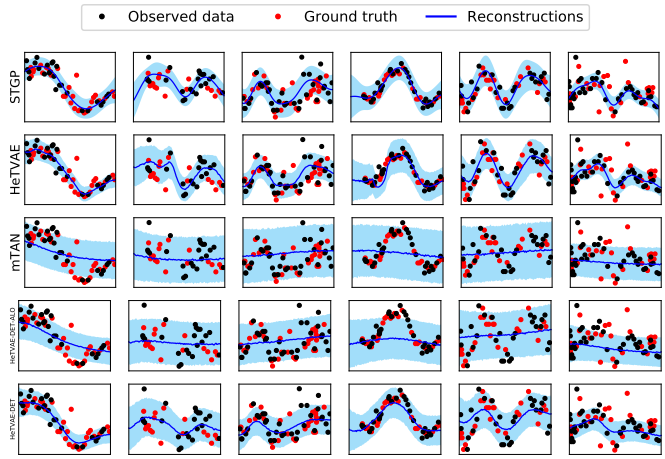
International Conference on Learning Representations (ICLR)
January 28, 2022
irregular sampling, uncertainty, imputation, interpolation, multivariate time series, missing data, variational autoencoder
In order to model and represent uncertainty in mHealth biomarkers to account for multifaceted uncertainty during momentary decision making in selecting, adapting, and delivering temporally-precise mHealth interventions. In this period, we extended our previous deep learning approach, Multi-Time Attention Networks, to enable improved representation of output uncertainty. Our new approach preserves the idea of learned temporal similarity functions and adds heteroskedastic output uncertainty. The new framework is referred to as the Heteroskedastic Variational Autoencoder and models real-valued multivariate data.
Irregularly sampled time series commonly occur in several domains where they present a significant challenge to standard deep learning models. In this paper, we propose a new deep learning framework for probabilistic interpolation of irregularly sampled time series that we call the Heteroscedastic Temporal Variational Autoencoder (HeTVAE). HeTVAE includes a novel input layer to encode information about input observation sparsity, a temporal VAE architecture to propagate uncertainty due to input sparsity, and a heteroscedastic output layer to enable variable uncertainty in output interpolations. Our results show that the proposed architecture is better able to reflect variable uncertainty through time due to sparse and irregular sampling than a range of baseline and traditional models, as well as recently proposed deep latent variable models that use homoscedastic output layers.
We present a new deep learning architecture for probabilistic interpolation of irregularly sampled time series.
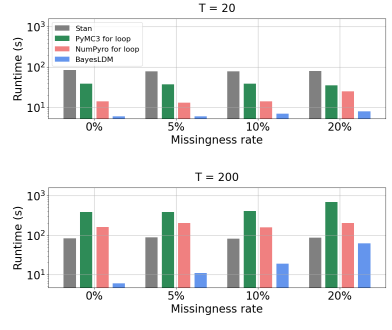
IEEE/ACM international conference on Connected Health: Applications, Systems and Engineering Technologies (CHASE)
September 12, 2022
Bayesian inference, probabilistic programming, time series, missing data, Bayesian imputation, mobile health
We have developed a toolbox for the specification and estimation of mechanistic models in the dynamic bayesian network family. This toolbox focuses on making it easier to specify probabilistic dynamical models for time series data and to perform Bayesian inference and imputation in the specified model given incomplete data as input. The toolbox is referred to as BayesLDM. We have been working with members of CP3, CP4, and TR&D2 to develop offline data analysis and simulation models using this toolbox. We are also currently in discussions with members of CP4 to deploy the toolbox’s Bayesian imputation methods within a live controller optimization trial in the context of an adaptive walking intervention.
In this paper we present BayesLDM, a system for Bayesian longitudinal data modeling consisting of a high-level modeling language with specific features for modeling complex multivariate time series data coupled with a compiler that can produce optimized probabilistic program code for performing inference in the specified model. BayesLDM supports modeling of Bayesian network models with a specific focus on the efficient, declarative specification of dynamic Bayesian Networks (DBNs). The BayesLDM compiler combines a model specification with inspection of available data and outputs code for performing Bayesian inference for unknown model parameters while simultaneously handling missing data. These capabilities have the potential to significantly accelerate iterative modeling workflows in domains that involve the analysis of complex longitudinal data by abstracting away the process of producing computationally efficient probabilistic inference code. We describe the BayesLDM system components, evaluate the efficiency of representation and inference optimizations and provide an illustrative example of the application of the system to analyzing heterogeneous and partially observed mobile health data.
We present a a toolbox for the specification and estimation of mechanistic models in the dynamic bayesian network family.
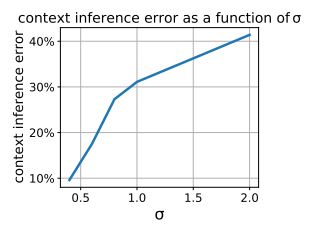
Conference on Uncertainty in Artificial Intelligence (UAI 2023)
May 17, 2023
reinforcement learning, partial observability, context inference, adaptive interventions, empirical evaluation, mobile health
Just-in-Time Adaptive Interventions (JITAIs) are a class of personalized health interventions developed within the behavioral science community. JITAIs aim to provide the right type and amount of support by iteratively selecting a sequence of intervention options from a pre-defined set of components in response to each individual’s time varying state. In this work, we explore the application of reinforcement learning methods to the problem of learning intervention option selection policies. We study the effect of context inference error and partial observability on the ability to learn effective policies. Our results show that the propagation of uncertainty from context inferences is critical to improving intervention efficacy as context uncertainty increases, while policy gradient algorithms can provide remarkable robustness to partially observed behavioral state information.
This work focuses on JITAIs, personalized health interventions that dynamically select support components based on an individual’s changing state. The study applies reinforcement learning methods to learn policies for selecting intervention options, revealing that uncertainty from context inferences is crucial for enhancing intervention efficacy as context uncertainty increases.
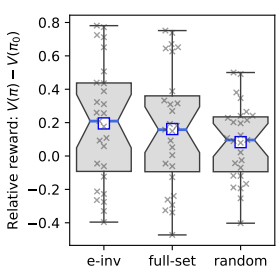
arXiv:2306.10983
June 27, 2023
effect-invariant mechanisms, policy generalization, machine learning
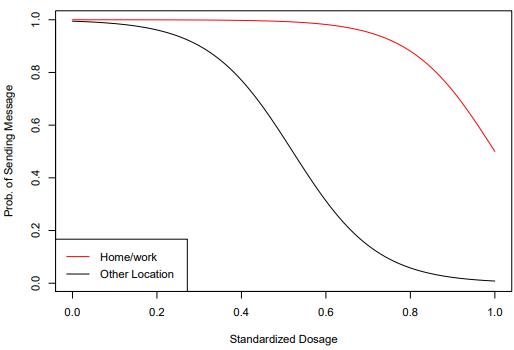
The Annals of Statistics
December 21, 2022
average reward, doubly robust estimator, Markov Decision Process, policy optimization
We consider the batch (off-line) policy learning problem in the infinite horizon Markov decision process. Motivated by mobile health applications, we focus on learning a policy that maximizes the long-term average reward. We propose a doubly robust estimator for the average reward and show that it achieves semiparametric efficiency. Further, we develop an optimization algorithm to compute the optimal policy in a parameterized stochastic policy class. The performance of the estimated policy is measured by the difference between the optimal average reward in the policy class and the average reward of the estimated policy and we establish a finite-sample regret guarantee. The performance of the method is illustrated by simulation studies and an analysis of a mobile health study promoting physical activity.
We consider batch policy learning in an infinite horizon Markov Decision Process, focusing on optimizing a policy for long-term average reward in the context of mobile health applications.

IEEE International Conference on Digital Health (ICDH)
July 10, 2022
learning systems, optimized production technology, behavioral sciences, electronic healthcare, decision trees
To promote healthy behaviors, many mobile health applications provide message-based interventions, such as tips, motivational messages, or suggestions for healthy activities. Ideally, the intervention policies should be carefully designed so that users obtain the benefits without being overwhelmed by overly frequent messages. As part of the HeartSteps physical-activity intervention, users receive messages intended to disrupt sedentary behavior. HeartSteps uses an algorithm to uniformly spread out the daily message budget over time, but does not attempt to maximize treatment effects. This limitation motivates constructing a policy to optimize the message delivery decisions for more effective treatments. Moreover, the learned policy needs to be interpretable to enable behavioral scientists to examine it and to inform future theorizing. We address this problem by learning an effective and interpretable policy that reduces sedentary behavior. We propose Optimal Policy Trees + (OPT+), an innovative batch off-policy learning method, that combines a personalized threshold learning and an extension of Optimal Policy Trees under a budget-constrained setting. We implement and test the method using data collected in HeartSteps V2N3. Computational results demonstrate a significant reduction in sedentary behavior with a lower delivery budget. OPT + produces a highly interpretable and stable output decision tree thus enabling theoretical insights to guide future research.
Online RL faces challenges like real-time stability and handling complex, unpredictable environments; to address these issues, the PCS framework originally used in supervised learning is extended to guide the design of RL algorithms for such settings, including guidelines for creating simulation environments, as exemplified in the development of an RL algorithm for the mobile health study Oralytics aimed at enhancing tooth-brushing behaviors through personalized intervention messages.
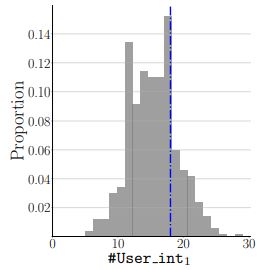
arXiv:2304.05365v6
August 7, 2023
reinforcement learning, personalization, resampling, exploratory data analysis, mobile health
There is a growing interest in using reinforcement learning (RL) to personalize sequences of treatments in digital health to support users in adopting healthier behaviors. Such sequential decision-making problems involve decisions about when to treat and how to treat based on the user’s context (e.g., prior activity level, location, etc.). Online RL is a promising data-driven approach for this problem as it learns based on each user’s historical responses and uses that knowledge to personalize these decisions. However, to decide whether the RL algorithm should be included in an “optimized” intervention for real-world deployment, we must assess the data evidence indicating that the RL algorithm is actually personalizing the treatments to its users. Due to the stochasticity in the RL algorithm, one may get a false impression that it is learning in certain states and using this learning to provide specific treatments. We use a working definition of personalization and introduce a resampling-based methodology for investigating whether the personalization exhibited by the RL algorithm is an artifact of the RL algorithm stochasticity. We illustrate our methodology with a case study by analyzing the data from a physical activity clinical trial called HeartSteps, which included the use of an online RL algorithm. We demonstrate how our approach enhances data-driven truth-in-advertising of algorithm personalization both across all users as well as within specific users in the study.
We use a working definition of personalization and introduce a resampling-based methodology for investigating whether the personalization exhibited by the RL algorithm is an artifact of the RL algorithm stochasticity.
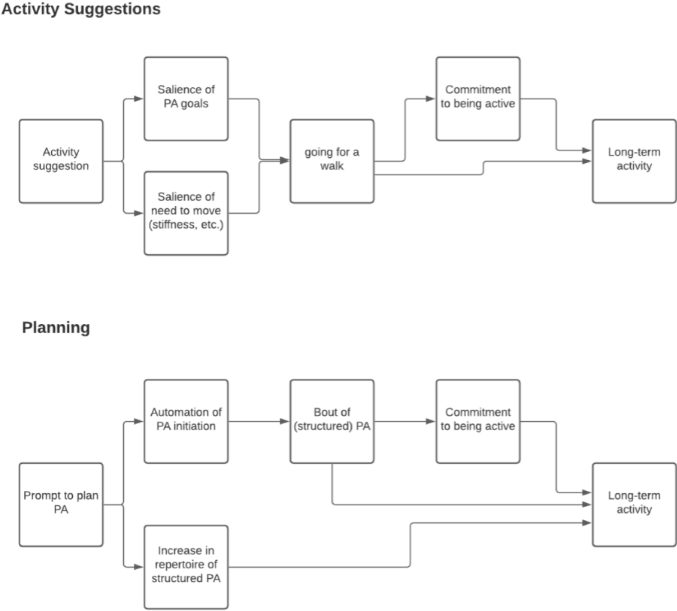
Psychological Methods
January 13, 2022

Conference on Uncertainty in Artificial Intelligence (UAI 2023)
May 17, 2023
reinforcement learning, partial observability, context inference, adaptive interventions, empirical evaluation, mobile health
Just-in-Time Adaptive Interventions (JITAIs) are a class of personalized health interventions developed within the behavioral science community. JITAIs aim to provide the right type and amount of support by iteratively selecting a sequence of intervention options from a pre-defined set of components in response to each individual’s time varying state. In this work, we explore the application of reinforcement learning methods to the problem of learning intervention option selection policies. We study the effect of context inference error and partial observability on the ability to learn effective policies. Our results show that the propagation of uncertainty from context inferences is critical to improving intervention efficacy as context uncertainty increases, while policy gradient algorithms can provide remarkable robustness to partially observed behavioral state information.
This work focuses on JITAIs, personalized health interventions that dynamically select support components based on an individual’s changing state. The study applies reinforcement learning methods to learn policies for selecting intervention options, revealing that uncertainty from context inferences is crucial for enhancing intervention efficacy as context uncertainty increases.

Statistical Science: a review journal of the Institute of Mathematical Statistics
causal inference, endogenous covariates, linear mixed model, micro-randomized trial
October 2020
Mobile health is a rapidly developing field in which behavioral treatments are delivered to individuals via wearables or smartphones to facilitate health-related behavior change. Micro-randomized trials (MRT) are an experimental design for developing mobile health interventions. In an MRT the treatments are randomized numerous times for each individual over course of the trial. Along with assessing treatment effects, behavioral scientists aim to understand between-person heterogeneity in the treatment effect. A natural approach is the familiar linear mixed model. However, directly applying linear mixed models is problematic because potential moderators of the treatment effect are frequently endogenous-that is, may depend on prior treatment. We discuss model interpretation and biases that arise in the absence of additional assumptions when endogenous covariates are included in a linear mixed model. In particular, when there are endogenous covariates, the coefficients no longer have the customary marginal interpretation. However, these coefficients still have a conditional-on-the-random-effect interpretation. We provide an additional assumption that, if true, allows scientists to use standard software to fit linear mixed model with endogenous covariates, and person-specific predictions of effects can be provided. As an illustration, we assess the effect of activity suggestion in the HeartSteps MRT and analyze the between-person treatment effect heterogeneity.
We discuss model interpretation and biases that arise in the absence of additional assumptions when endogenous covariates are included in a linear mixed model. In particular, when there are endogenous covariates, the coefficients no longer have the customary marginal interpretation.

Journal of the American Statistical Association
sequential decision making, policy evaluation, markov decision process, reinforcement learning
2021
In this paper, we provide an approach for conducting inference about the performance of one or more such policies using historical data collected under a possibly different policy.
You must be logged in to post a comment.
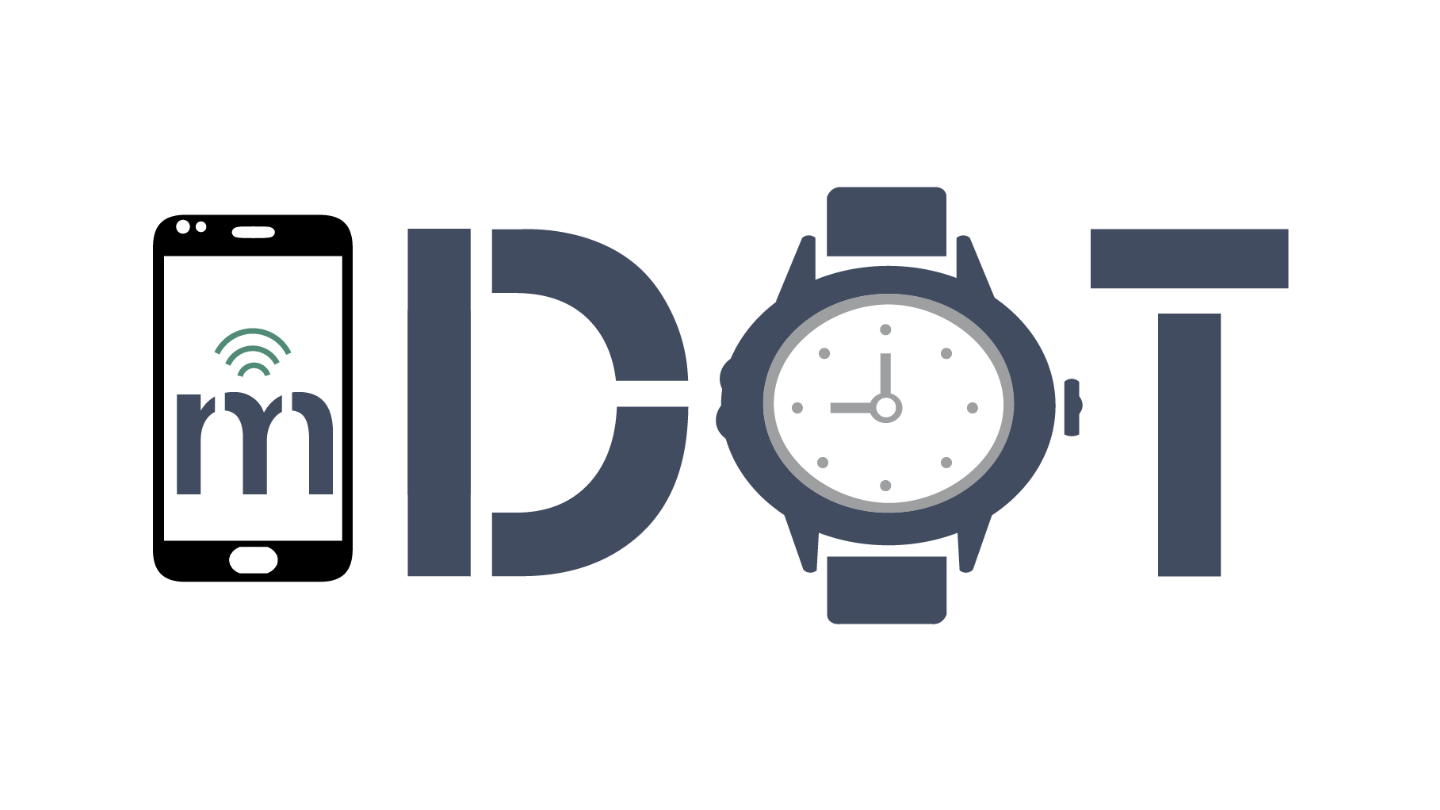
No Comments